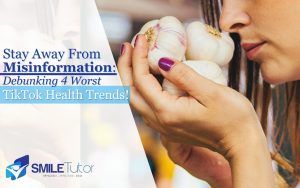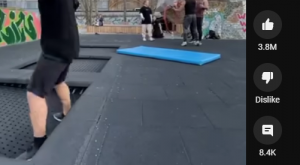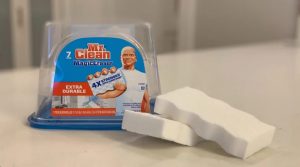
TikTok is a household name at this point.
You’d be living under a rock not knowing about the latest social media. Dance videos, lip syncing memes, or side-by-side duets, you name it, TikTok’s got even the most obscure video ideas you can think of!
But despite TikTok’s claim to fame, its existence hinges more towards notoriety amongst mainstream media; If you’ve seen the news, you’d know. They say, it’s poison for today’s youngins, and we think it’s not too far from the truth.
Why? Because in a bid to ‘outshine’ their competition for attention, content creators will choose to produce more… “clickbaity” content. Now we’ve got to the point where “health experts” are telling us the next life hack that will improve our health quickly!
That is the start of these fake health trends we keep seeing on TikTok. Whether you’re a parent or a student, it’s good to take a step back and reflect on these trends, as well as the dangers of misinformation today.
Why Do People Follow These TikTok Trends?

[iStock]
TikTok is an app where you can browse and create short-form video content in the form of “shorts”. Just the right length for our short attention spans, and often catchy enough to leave an impression.
The Impressionable Demographic

[Freepik]
While not always true, sentiments of “Wow, you can do that?” are common, especially towards the main demographic on the platform: Teenagers and under!
Children alike are very impressionable. And when information is condensed to the length of a short, they think it’s meaningful content and would take things at face value, often without time for context!
Belief in Numbers

More importantly, however, is the concept of “herd mentality”.
You see a short with over two million likes. Your first instinct?
“It must be popular because it’s interesting, relevant and accurate.”
Thirty million views? This should be informative enough to many people.
Many are vulnerable to misinformation because of their gullibility in numbers. There is reassurance in numbers. Nothing can go wrong with numbers. It is this belief that drives the “validity” of content that masses consume, and that can lead to people believing falsehoods online without fact checking where they’re coming from
Remember, influencers don’t often have the credentials to be able to comment on health effects!
The Allure of a “Life Hack”

[AsiaOne]
The idea of a “life hack” lends sway to even the most inflexible person. I mean, who would pass up on a better way to do things? A faster way to do things?
Productivity is the name of the game. And when results are shown immediately, guides that especially tap on daily essentials like food, health and beauty, can blow up really fast once people find out that the “life hack” actually “works”.
Not to mention, youths are around the age of when they are beginning to feel conscious about how they look. Without proper guidance, youths would naturally begin to take examples or make role models out of their content creators, influencing their food choices and health decisions
That is, of course, ignoring the aftermath and consequences of following someone’s “advice” without properly researching what they’re getting into!
Let’s dive right into the 10 fake TikTok health trends, and understand why each of them were convincingly TERRIBLE as health advice.
1. Putting Garlic in the Nose

Did any of you laugh when reading this? I sure did.
What can you possibly achieve by putting garlic into your nose? Well, sinuses and stuffy noses apparently!
TikTok user @hwannah5 seemed bent on sharing her new solution to her followers, remaining adamant that the trick worked even though TikTok had taken her video down once before. The abundance of snot after the garlic is removed may show that the trick works, but it’s more complicated than it looks! Your symptoms may have just worsened!
No matter how “effective” it claims to be, experts have chimed in with safety concerns. It is common sense that adverse effects can come from inserting a natural spice into your sensitive nose!
Disregarding the garlicky smell that will stay for some time, its natural oils can also irritate the skin around the nose, and may be more severe depending on the individual!
If you want more reliable results, try using humidifiers for enclosed environments, or having a higher Vitamin C intake! And while not a permanent solution to your morning troubles, check out this video on how to clear your nose fast and efficiently!
2. Teeth-Whitener “Hacks”

DIY solutions are often put out as content for woodworking, or other kinds of crafts in the world. It shows the flexibility and efficiency of occupations like construction workers, and there is a certain allure in watching people work.
What YOU shouldn’t do, however, is watch the next DIY solution that “dentists don’t know”, and apply it to your TEETH!
We’re talking about the Mr. Clean Magic Eraser teeth whitening hack way back in 2021. That’s a mouthful. Here’s a few excerpts of what TikToker Heather Dunn had claimed on the original video.
“Step number one, I don’t use any fluoride at all. When the dentist says, ‘use your fluoride, don’t rinse,’ umm… no, I don’t do that… Number two, I do something called ‘oil pulling,’ I look it up on YouTube and I use coconut oil…”
“Number three, and here is where we all gasp. This is a Magic Eraser. Yeah, that’s what I said. I take a little, tiny piece of it and wet it, don’t touch your gums… I’ve been doing it for, like, two years.”
Heather has since taken down their video, for obvious reasons. As it turns out, the “teeth whitener” contains melamine, sulfurous acid, formaldehyde, and sodium. Acid is permanently damaging to the enamel of the teeth, and formaldehyde is a gas used for funeral embalming… definitely NOT safe to put in your mouth or to ingest!
3. Water Fasting

Another one of these hacks come from a place of wanting to “stay fit” with the most extreme of measures. As you’ve guessed by its name, water fasting has become a trend for some time, with believers of the method coming from all over social media, not just TikTok.
You drink water and only water for two or more days. That, without context, can only be heard of as a new form of torture. But for the ones who really want to cut down on their weight, it may seem like the “hidden trick that doctors don’t want to tell them about”!
But water fasting is pretty much intermittent fasting. Water is definitely not a substitute for food.
They say that humans can live longer with water than food, but that doesn’t change the fact that you are not eating ANYTHING.
No meat. No vegetables. No fruits. It goes without saying that you would lose weight. But at what cost?
A professional says it best: “Having worked in the emergency department for over two decades taking care of people engaged in water fasting, my advice is simple: avoid it at all costs. It’s just not worth the associated risks and it could cost you your life.”
Water fasting tends to lead to long-term complications in the nerve, muscle and heart. This is not including more common symptoms like general lethargy or even psychiatric problems! This is definitely not a sustainable weight-loss method!
4. Following “What I Eat In A Day”

[Freepik]
Another trend-setting content would come in the form of shorts titled “What I Eat In A Day”. As its name suggests, the influencer, usually female, shows off their daily diet as the main appeal of these videos. Many people enjoy seeing what other people are eating, but these diets can range from unrealistically little, to absurdly excessive (often filled with advertised and expensive supplements).
The dangers of this threat lie in its invisible pull on expectations. Remember, many of the audience watching these influencer diets are impressionable followers. They see their role models looking fit and happy, and they gravitate their success to the food that they eat.
This naturally breeds comparison around food choices, despite the video intent.
“If I eat exactly what she’s eating, I’ll look just like her!”
But that’s just not how it works. Even if you meticulously follow your favorite influencer’s meal plan, your body will still look and feel distinct. Dietitians have pointed out some concerning aspects in these videos, like very low-calorie content, overly strict diets, and an unhealthy focus on calorie counting, macro-tracking, and similar practices.
Yes, it can be DEADLY for those already struggling with their relationship to food, either through forms of restrictive dieting or eating disorders.
Social Media Creates Blind Consumers

It’s crucial to recognize that not everything we see online is as it seems, now more than ever.
Misinformation spreads like wildfire, and as we’ve seen with TikTok, some serious risk can come from creating health trends that are laced with wrong information.
It’s alarming, especially considering that a significant portion of TikTok’s user base is made up of young people. Once misinformation spreads, it’s tough to undo the damage.
While TikTok has guidelines against harmful content, unhealthy trends still persist on the platform. This is why you should ALWAYS avoid blindly following trends and make sure to fact-check information, especially when it comes to health advice.
So keep away from misinformation! Let’s be mindful and vigilant about what we consume online, alright? Stay safe out there everyone!
